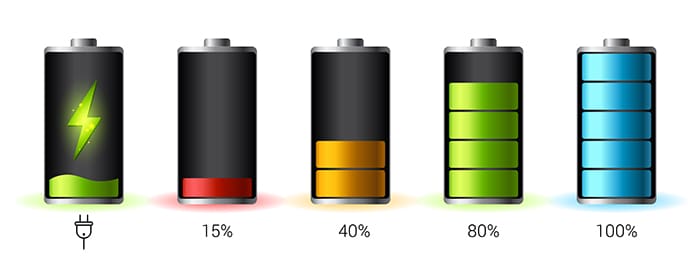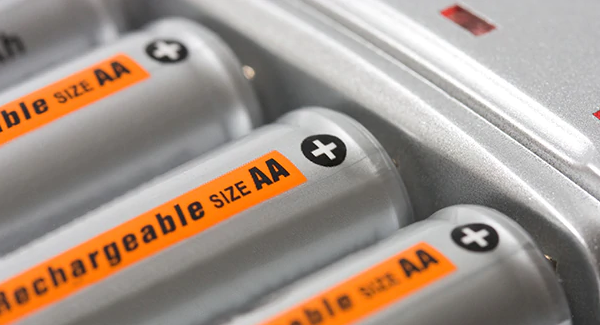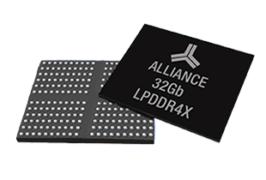Introduction
People don’t want to be tied down. Everyone wants their independence and the freedom to come and go. Something in our DNA makes us want to travel to different places, explore unfamiliar destinations, take in new experiences, or go on summer vacation as we try to unplug and recharge. However, the one thing we can’t unplug from or leave behind is our dependence on technology.
Batteries provide untethered power, enabling convenience, dependability, and mobility—freedom. Environmental responsibility suggests that rechargeable batteries also have the same benefits but can save money while reducing the amount of waste. This article examines the benefits of unplugging and recharging offered by rechargeable battery technology operate, enabling us to make life better.
Batteries
As stated upfront, modern society is in love with technology. We employ it to provide us with a better and more comfortable lifestyle. The technological hardware we use is greatly enabled by the physical phenomena of electrical charge in motion—electricity. Alternating current (AC), current that moves bidirectional, is useful for sending power over vast distances because of its simplicity in changing voltages through the use of transformers. On the other hand, direct current (DC) is a unidirectional current where electricity moves from a negative terminal in the direction of the positive terminal. One of the unique features of DC is that it can get stored for later usage.
Batteries are electrochemical cells capable of storing and delivering DC. They come in various shapes and sizes and electrical capacities that get designed around their intended usage. Batteries might get classified as either primary or secondary. Primary batteries are not rechargeable; they are designed for a singular usage, whereas secondary batteries are rechargeable and available to be used repeatedly.
Unplug
Energy storage available in the form of DC batteries offers a significant advantage over AC power. It allows users to be highly mobile. By eliminating the need to be directly connected into an AC power source, batteries enable users untethered freedom to use electronic devices on the go. Unplugging leads to higher productivity, flexibility, and efficiency. It allows users to be untethered from physical locations such as power plants, factories, offices, and homes and be out and about. After all, few of us today want to be tied to an electrical outlet all day.
How far out and about one might ask? Well, pretty far. At the time of this writing, NASA astronauts Christopher J. Cassidy and Robert L. Behnken were aboard the International Space Station (ISS) working diligently to replace various DC batteries (Figure 1). NASA reports the astronauts as “swapping five (5) aging nickel-hydrogen (NiH2) batteries with two (2) new lithium-ion (Li-Ion) batteries and later moving on to swap one (1) more NiH2 battery for a Li-Ion battery on the Starboard-6 truss structure worksite.” Rechargeable batteries allow us to be unplugged even into the vast domains of space.

Figure 1: The International Space Station uses rechargeable batteries. (Source: Dima Zel/Shutterstock.com)
Recharge
Besides allowing us to go unplugged, secondary batteries are rechargeable. Rechargeable batteries can be recharged repeatedly (Figure 2).

Figure 2: Rechargeable batteries can get used more than once. (Source: MarySan/Shutterstock.com)
Recently, I returned home from one week’s vacation. I immediately noticed my overgrown lawn because of the heavy rains in my absence. Coming home from work the day after my return, I knew the first thing I had to do was mow. An hour later, I was done, hot and sweaty from the 37°C temperature ever common to Texas in the summer and full of ant or mite bites up and down my legs. By late evening, these bites were driving me insane with the itching and the desire to scratch them, which we all know we are not to do. My only hope was to alleviate the pain was to go to bed and sleep it off. I took two antihistamine diphenhydramine (Benadryl) pills and went to sleep. I slept through the night and woke up refreshed and no longer itching.
Turns out, all I needed was a recharge. As humans, we recognize that when we drain ourselves physically, mentally, and emotionally, periodically, we need to take time to recoup our power and energy. Humans biologically accomplish this through sleeping, a sort of biological recharging. Rechargeable batteries emulate this human capability to get reenergized.
One important ramification of this is that battery costs must be reevaluated over time. In many cases, primary batteries are less costly to purchase. However, when the amount of current consumption is calculated over time, the need only to buy a secondary cell initially and then get many low-cost recharges out of it will make the economic benefits of rechargeable batteries stand out as very advantageous. The principle of the total cost of ownership (ToC) should be examined based on the context of the specific application.
Another excellent side benefit of being rechargeable is the impact that this has on environmental issues. We desire to live in a world whereby humankind stewards its resources well and works to mitigate harm to the environment. There is general agreement globally that every business endeavor should commit to and work to achieve initiatives that promote greater environmental responsibility. Although the ecological impact is not often priced into a ToC calculation, it should be (Figure 3).

Figure 3: Rechargeable batteries help reduce waste. (Source: Artem Oleshko/Shutterstock.com)
Because batteries are electrochemical devices, there should be an impetus to reduce the consumption of its resultant chemical waste. Primary units, as mentioned, are suitable for one-time usage. They must be disposed of after they lose their charge. Rechargeable batteries reduce chemical and solid waste.
Capacity
How long can a battery go before it needs to be replaced (primary cell) or recharged (secondary cell)? Battery life is determined by a battery’s capacity to hold an electric charge (if only that pink bunny on TV could talk). This battery capacity gets measured in Ampere hours (Ah). Because rechargeable batteries are electrochemical devices capacity is limited in a primary aspect based upon how large the physical cell will be. In small devices or portable applications, it can be expressed in milliamp-hours (mAh).
Inherently large loads, items drawing large currents, will discharge a battery quicker. An adjustment factor, named consumption rate, is generally applied to any battery life calculations. Consumption rate helps account for the reality that ultimately the battery will decrease in its ability to deliver current some point before it getting fully discharged. Mouser Electronics provides a useful battery life calculator for engineers to make quick calculations.
Battery Life = Battery Capacity (Ah) ÷ Load Current (A) x Consumption Rate (0.7 default)
Runtime = 10 x Ampere Hours (Ah) ÷ Load in Watts (W)
Number of Charges
Secondary batteries provide unplugged freedom and the ability to be recharged. But how many times can they get recharged before they break down into failure? To be most advantageous, the number of recharges available should exceed the expected number of discharges that will occur. As is the case of the secondary batteries aboard the space station mentioned earlier, there is a limit. These have to be some of the most highly designed cells in usage, yet they ultimately wear out and need to be replaced.
Most everyone is familiar with rechargeable batteries in a specific form available for commercial and reusable use in products employed in our everyday lives. Often this takes the form of rechargeable batteries used in items such as cameras, remote controls, flashlights, smoke detectors, remote control toys and hobbies, and clocks. Often what is employed is a standardized rechargeable battery in the AA or AAA category. These types of readily used rechargeable batteries are recognized to be able to be charged to on the order of 1,000 (103) times before they wear out.
Capacity Retention
Have you ever pulled out two fresh batteries and plugged them in and found them not ready to function? This effect can be caused by an issue known as capacity retention. It is analogous to me with college Algebra and Latin. At one time, I knew them well. I was fully charged. But alas, over time, it has slowly slipped away. I still maintain some, but it is a shell of itself.
Likewise, batteries do not just sit at 100 percent charge once they reach it. Instead, they generally lose a very minute amount of charge over time, resulting in a shrinkage of their total available charge. In common parlance, this is known as the battery’s shelf-life. How long can it stay in storage before it ultimately trickles away and its charge becomes worn out? For primary cells, this means they are now useless. For a rechargeable cell, they simply must be recharged, and then they will be fresh.
Common Types
Mouser Electronics provides various batteries and battery technologies from industry-leading manufacturers. Mouser is an authorized distributor for many battery manufacturers, including Panasonic, Phoenix Contact, Power-Sonic, Renata, RRC Power Solutions, Seiko Instruments, Tadiran Batteries, Ultralife, and many more.
Several different types of materials are employed to make rechargeable batteries. Some of the most common types include lead-acid (Pb-acid), Li-Ion, Lithium Iron Phosphate (LiFePO4), Nickel Cadmium (NiCd), Nickel Metal Hydride (NiMH). Let’s quickly take a look at each of these.
Lead-acid
If you own or ride in an automobile, then you should be readily familiar with this type of rechargeable battery. Lead-acid batteries are the default type of battery found in most gas combustion automobiles. Lead-acid batteries have a high power to mass performance that makes them suitable for high amperage demand applications such as turning over an automotive starter that requires lots of energy to turn over.










